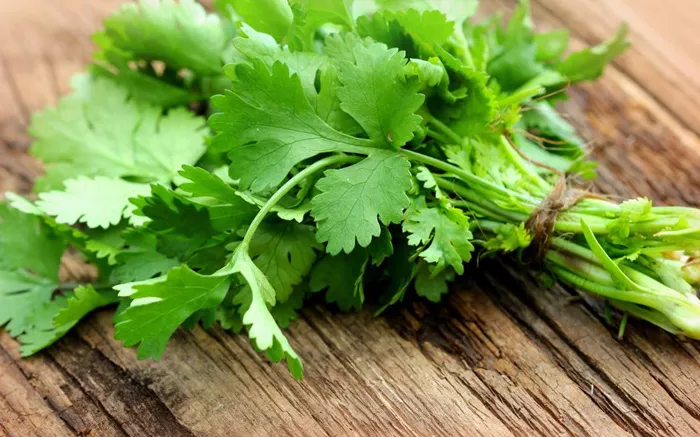Cilantro, also known as coriander, is a popular herb used in various cuisines worldwide. Its vibrant green leaves and aromatic flavor make it a favorite in dishes ranging from salsas to curries. However, to maximize your cilantro harvest and extend the life of this versatile herb, proper pruning is essential. In this comprehensive guide, we’ll delve into the art of cilantro pruning, offering you practical tips and novel techniques to keep your cilantro thriving and delicious throughout the growing season.
Understanding Cilantro Growth
The Life Cycle of Cilantro
Cilantro is a short-lived herb with a life cycle that typically lasts between 3 to 4 months. It grows quickly, reaching maturity in about 40 to 50 days. The herb is known for its delicate leaves, which are often used fresh, and its seeds, which are harvested as coriander. Cilantro’s growth can be divided into three main stages:
Seedling Stage:Cilantro starts as small seedlings that quickly develop into leafy plants.
Vegetative Stage:During this period, the plant produces abundant foliage, which is ideal for harvesting.
Bolting Stage:Cilantro eventually begins to flower and bolt, transitioning from leafy growth to seed production.
The Importance of Pruning
Pruning cilantro is crucial for several reasons:
Encourages Lush Growth:Regular pruning helps to maintain a bushier plant, resulting in more leaves for harvest.
Prevents Bolting:Proper pruning techniques can delay the bolting process, allowing you to enjoy fresh cilantro for a longer period.
Promotes Health:Pruning helps remove old or damaged leaves, which can improve the plant’s overall health and productivity.
Techniques for Effective Cilantro Pruning
1. Start with the Basics: Timing and Tools
Before you begin pruning, it’s important to have the right tools. A pair of clean, sharp scissors or garden shears will work best. Timing is also key—prune cilantro when the plant is actively growing, ideally in the morning when the leaves are fresh and hydrated.
2. Identify the Right Leaves to Prune
To encourage new growth, focus on pruning the following parts:
Older Leaves:These are typically the outermost leaves that may be tougher and less flavorful. Removing them helps direct energy to the younger, tender leaves.
Flowering Shoots:If the plant starts to flower (bolt), prune these shoots to redirect energy back into leaf production.
3. Pruning for Optimal Growth
Follow these steps to prune cilantro effectively:
Trim the Top:Use your scissors to trim about one-third of the plant’s height. This practice encourages lateral branching, which results in a bushier plant.
Remove Flower Buds:Pinch off any flower buds that appear to prevent the plant from focusing on seed production.
Harvest Regularly:Regularly harvesting leaves not only provides fresh cilantro for your kitchen but also stimulates the plant to produce new growth.
4. Advanced Pruning Techniques
For those looking to take their cilantro gardening to the next level, consider the following advanced techniques:
Cut Back Entire Plants:If your cilantro plants have become leggy or overgrown, cut them back to about 2 inches from the soil. This can rejuvenate the plant and promote fresh growth.
Selective Harvesting:Harvest the leaves selectively by cutting them from different parts of the plant. This helps in maintaining a balanced growth and ensures that the plant doesn’t become one-sided.
see also: How to Wire a Bonsai Tree?
Preventing Common Issues
1. Avoiding Over-Pruning
While pruning is beneficial, over-pruning can stress the plant and hinder its growth. Avoid removing more than one-third of the plant at a time.
2. Managing Pests and Diseases
Cilantro is susceptible to various pests and diseases, such as aphids and fungal infections. Regularly inspect your plants and remove any affected areas to keep them healthy.
3. Ensuring Proper Watering and Nutrition
Pruned cilantro plants need adequate water and nutrients to recover and thrive. Ensure consistent watering and consider using a balanced fertilizer to support growth.
Extending the Harvest Season
1. Succession Planting
To enjoy cilantro throughout the year, practice succession planting. Sow new seeds every few weeks to ensure a continuous supply of fresh cilantro.
2. Indoor Growing
Consider growing cilantro indoors, especially during colder months. Use a sunny windowsill or grow lights to provide the necessary light for healthy growth.
3. Preserving Cilantro
If you find yourself with an abundance of cilantro, consider preserving it by freezing or drying the leaves. This way, you can enjoy the herb’s flavor even when it’s out of season.
Summary
Pruning cilantro is a crucial step in maintaining a productive and healthy herb garden. By understanding the plant’s growth cycle and implementing effective pruning techniques, you can enjoy a bountiful harvest of fresh cilantro for a longer period. Regularly pruning older leaves, removing flowering shoots, and using advanced techniques will help keep your cilantro plant lush and vibrant. Additionally, managing common issues and extending the harvest season through succession planting and indoor growing will ensure that you always have this flavorful herb at your disposal. With these tips, you’ll be able to make the most of your cilantro and keep your dishes deliciously fresh.
Related topics:
- Plant This Flower to Keep Your Garden Colorful All Winter
- 7 Flowers Perfect for Planting in Summer to Keep Your Yard Calm and Peaceful
- What Is the Color of Flowers for Christmas?


